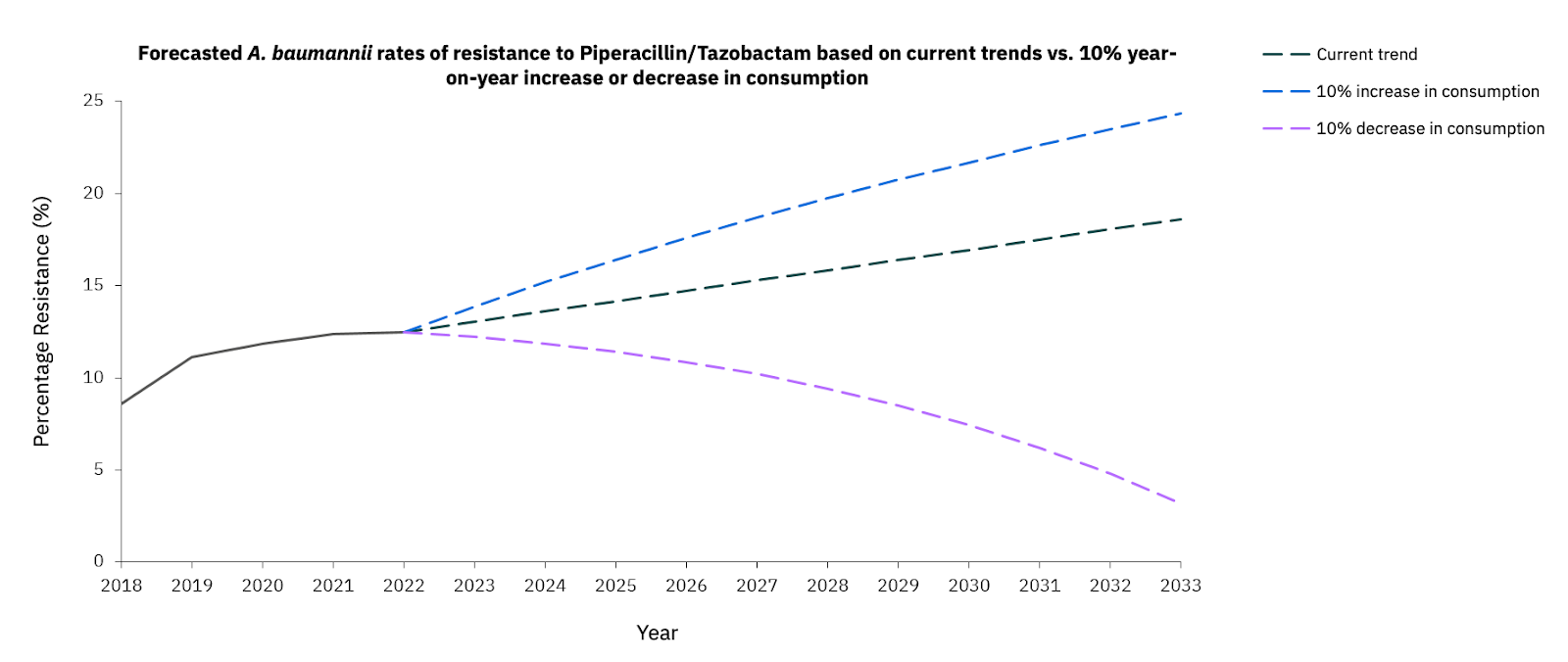Resistance to first-line antibiotic piperacillin/tazobactam to grow from 12% to 25% in the UK by 2033
Airfinity models show that resistance of Acinetobacter baumannii bacteria to the first-line treatment antibiotic piperacillin/tazobactam is forecast to increase to 18.6% based on current trends and rise to 25% if consumption grows.

The model estimates resistance in the UK for the WHO critical priority bacteria in three scenarios: low consumption, current consumption, and increased consumption. With a 10% year-on-year increase in consumption this is projected to reach around 25%. This trend is repeated in the other critical priority bacteria, Escherichia coli, Pseudomonas aeruginosa and Klebsiella pneumoniae, with resistance to piperacillin/tazobactam increasing significantly in an increased consumption scenario.
K. pneumoniae is expected to see the most dramatic increase in resistance, from 19.6% when last reported in 2022 to up to 41.8% in 2033. Interestingly, resistance in K. pneumoniae appears to be less related to consumption compared to other bacteria, with resistance increasing by a similar level (up to ~42%) in all three scenarios. This highlights that while reducing inappropriate antibiotic consumption overall remains critical to reducing resistance, it is not the only influencing factor and other strategies must also be implemented.
These findings were presented in Airfinity exclusive industry leader roundtable: Combating AMR: Identifying, predicting, and reducing AMR burden. To see the full presentation click here, or email infectiousdisease@airfinity.com for more information.